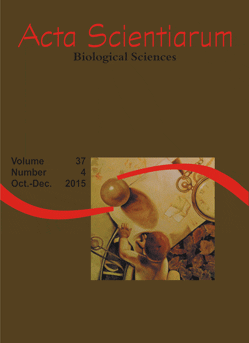<b>Esterase isozymes patterns of grape vine (<i>Vitis vinifera</i> L.) are altered in response to fungicide exposure
Abstract
Current analysis characterizes the effect of different fungicides often applied for pest control on a-and b-esterase patterns of four economically important table-wine grape cultivars (Italia, Rubi, Benitaka and Brasil) of Vitis vinifera. The a- and b-esterase patterns in bud leaves of the cultivars were assessed by native PAGE analysis. Cabrio Top® compound inhibited Est-2, Est-5, Est-6, Est-7, Est-8, Est-9 and Est-10 carboxylesterases, whereas Est-4, Est-11, Est-12, Est-13, Est-14 acetylesterases and Est-16 carboxylesterase were detected as weakly stained bands. Carboxylesterases and acetylesterases were also detected as weakly stained bands when exposed to fungicides Orthocide 500®, Positron Duo® and Folicur PM®. No changes in a- and b-esterase patterns were reported when the vines were exposed to the fungicides Rovral SC®, Kumulus DF®, Curzate M®, Score® or Cuprogarb 500®. The evidence of functional changes in carboxylesterase and acetylesterase levels in current study is a warning to grape producers on the dangers inherent in the indiscriminate use of potent and modern fungicides extensively used in agriculture. The inhibition effect of fungicides on esterase isozyme molecules seems to be independent of the fungicide chemical.
Downloads
DECLARATION OF ORIGINALITY AND COPYRIGHTS
I Declare that current article is original and has not been submitted for publication, in part or in whole, to any other national or international journal.
The copyrights belong exclusively to the authors. Published content is licensed under Creative Commons Attribution 4.0 (CC BY 4.0) guidelines, which allows sharing (copy and distribution of the material in any medium or format) and adaptation (remix, transform, and build upon the material) for any purpose, even commercially, under the terms of attribution.
Read this link for further information on how to use CC BY 4.0 properly.












1.png)




3.png)













